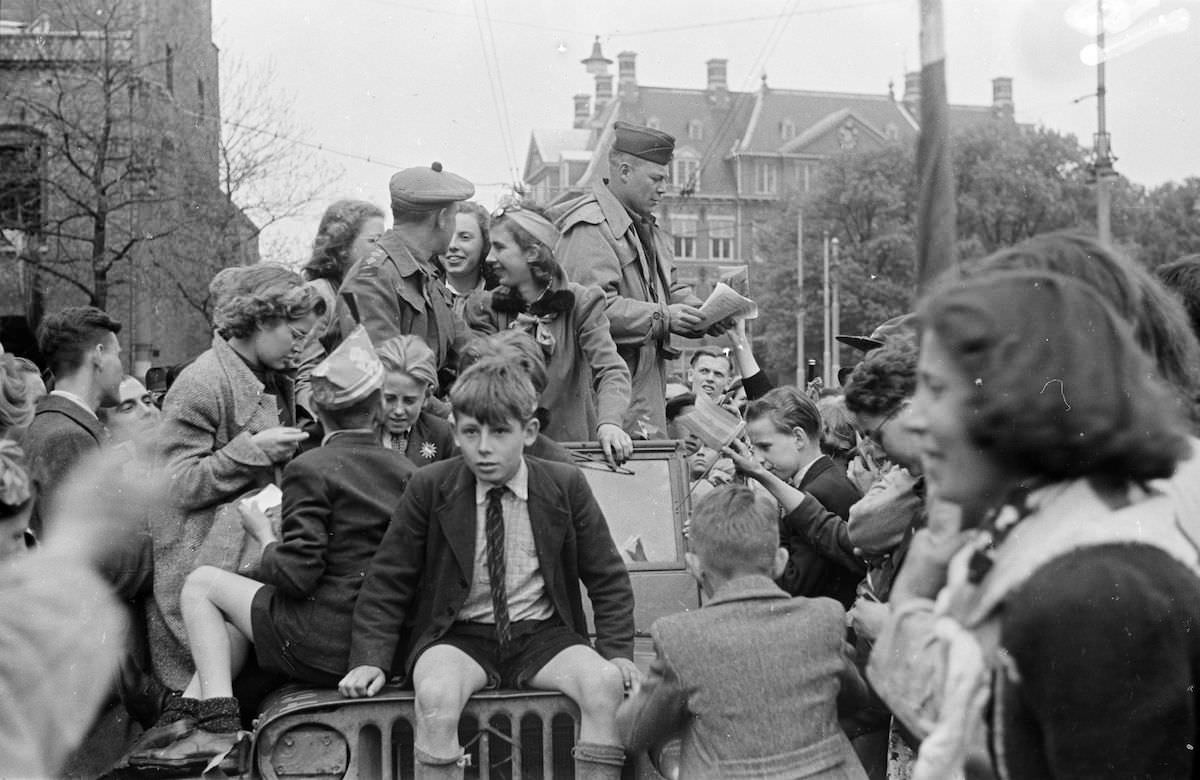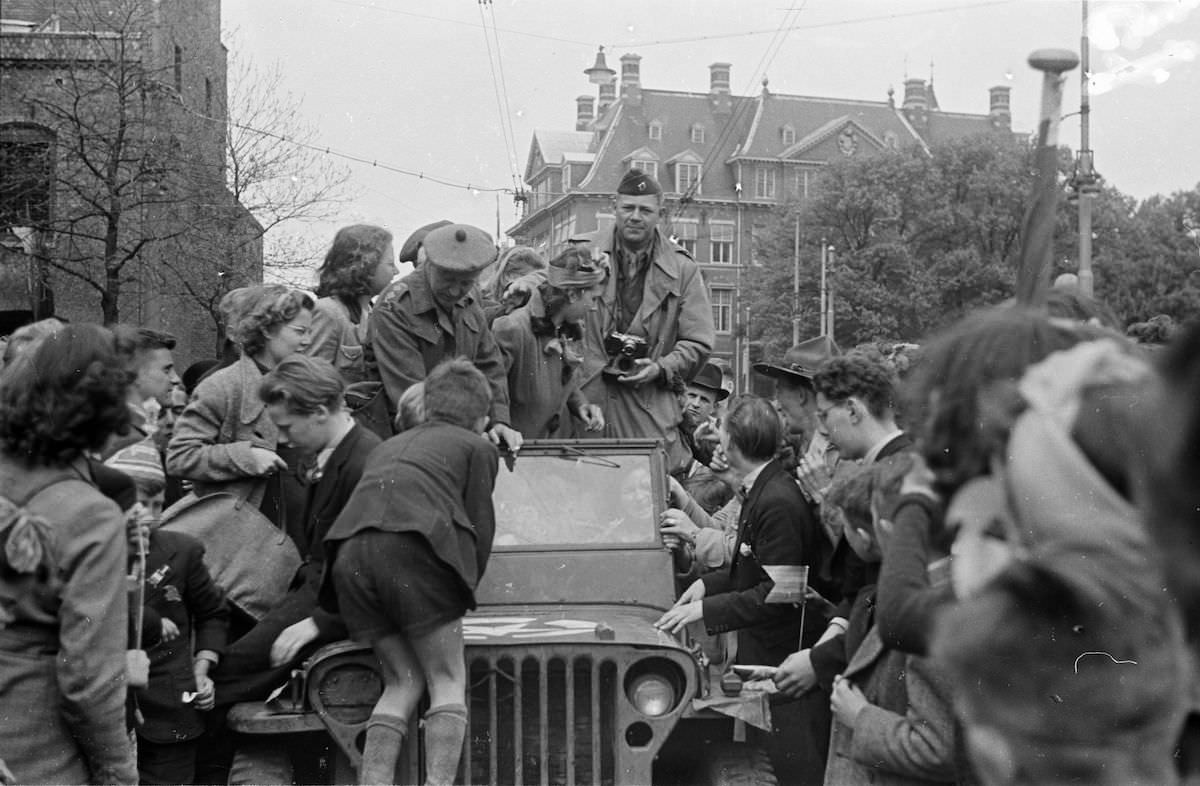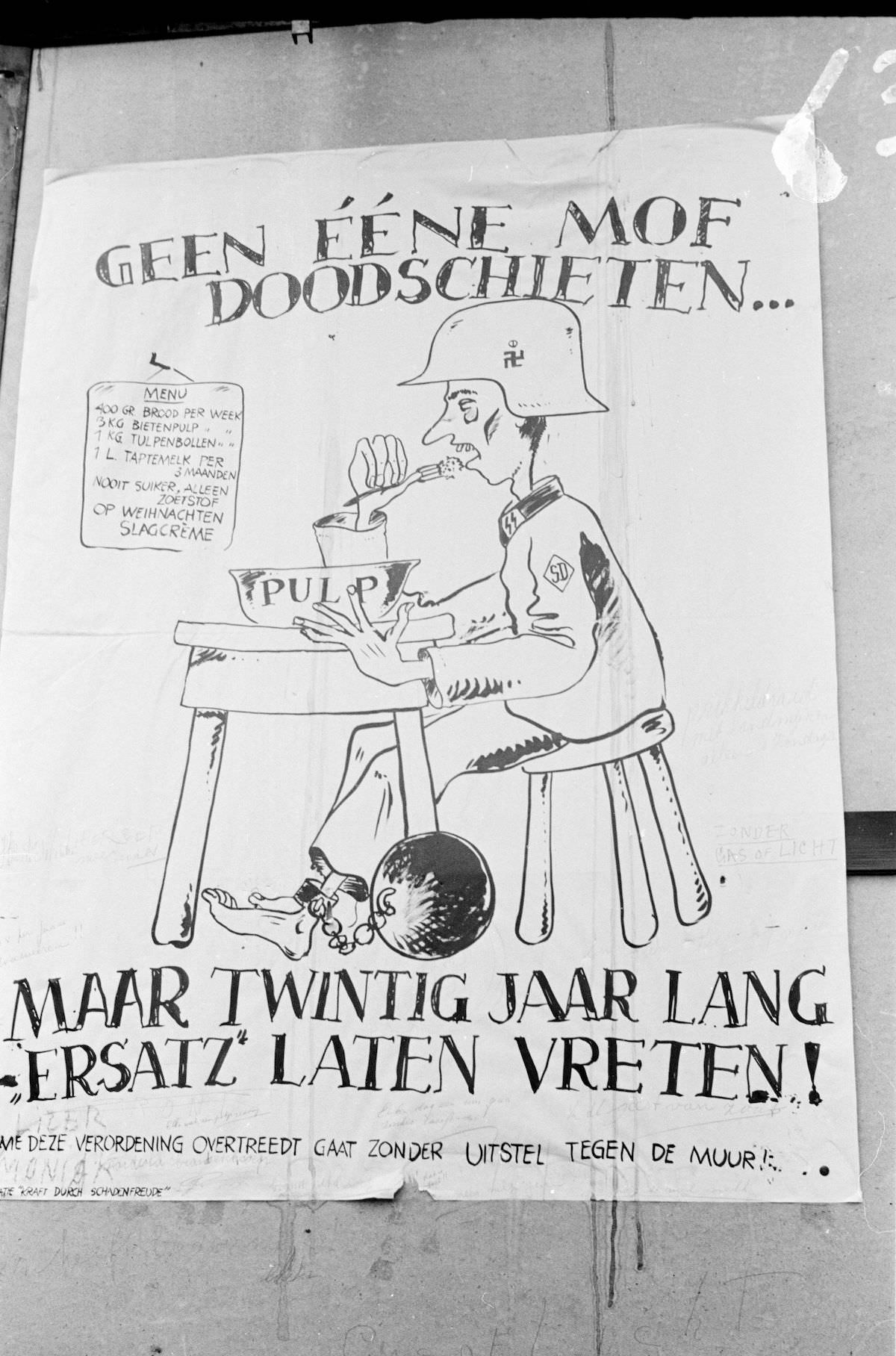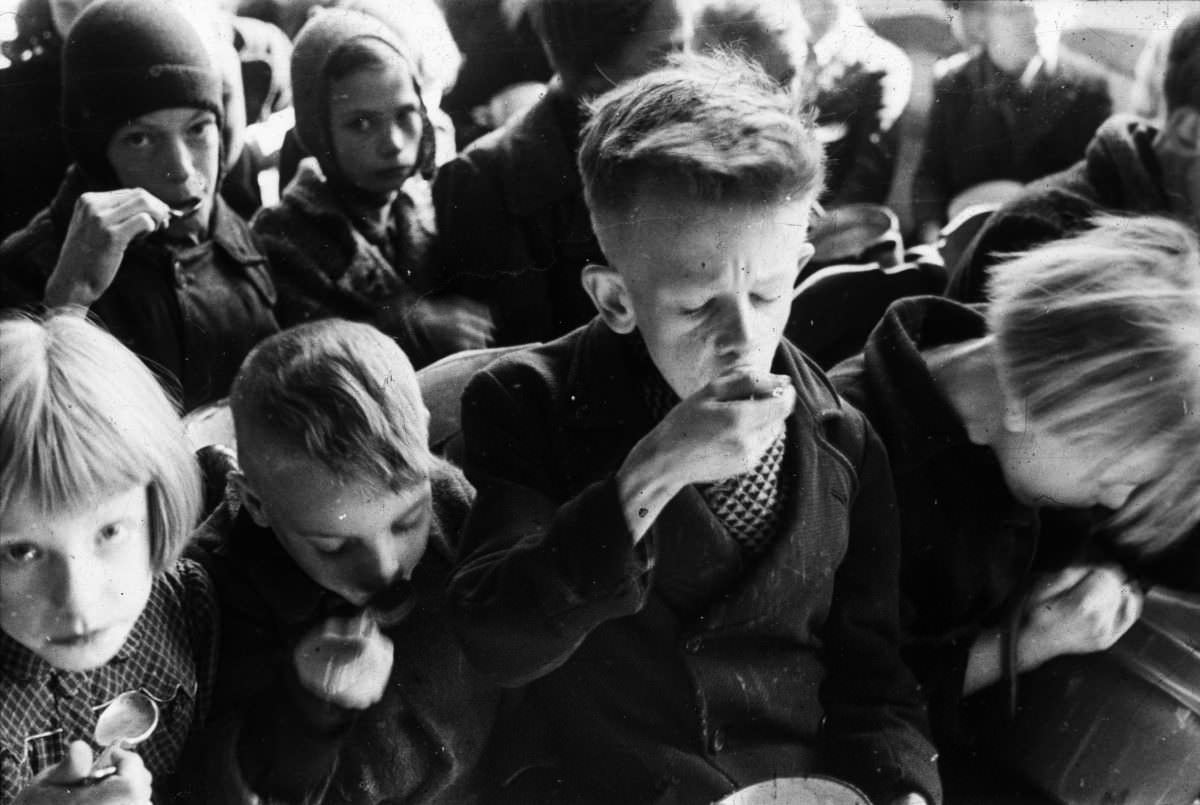Despite the Netherlands neutrality during World War II, German forces launched a surprise attack on the Netherlands on May 10, 1940. One day after the bombing of Rotterdam Netherlands officially signed the surrender with Germany. The invaders placed the Netherlands under German occupation, which lasted in some areas until the German surrender in May 1945.
In September 1944, Dutch railway workers downed their tools and launched a strike with the Dutch government’s support in exile. The strike was intended to aid the Allied advance by curtailing German troop movements. But the plan was failed, and the German sought vengeance. They placed an embargo on all inland shipping, preventing farm food from reaching cities, including The Hague. More than 20,000 Dutch starved to death. The Germans surrendered their grip on The Netherlands on May 5 1945. More than 205,901 Dutchmen and women had died of war-related causes.
Dutch photographer Menno Huizinga documented the liberation of the Netherlands. He was working as a spy of the resistance during that time. From October 1944, Huizinga took photos on microfilm of the German occupation’s consequences in The Hague.
#1
#2
#3 Canadian soldiers are greeted with their vehicles by a frenzied crowd at the Buitenhof, The Hague (May 6, 1945).
#4
#5
#6
#7
#8
#9 A group of people read a series of handwritten wall papers in the street, under an advertisement for the newspaper “De Nieuwsbron”.
#10
#11
#12 Entry of Queen Wilhelmina in The Hague
#13
#14
#15
#16
#17
#18
#19
#20 Inscription next to the front door of the house at 99 Riouwstraat in The Hague after a V2 impact on January 25, 1945. The residents, Family A.

Tamson, were not injured, but the house was severely damaged. At 8:15 am in the morning of January 25, a V2 crashed in a residential area of the Archipelbuurt. The houses at Riouwstraat 96 to 120 were destroyed, resulting in 10 deaths. Menno Huizinga was part of the Hiding Camera and illegally took photos during the occupation.

































